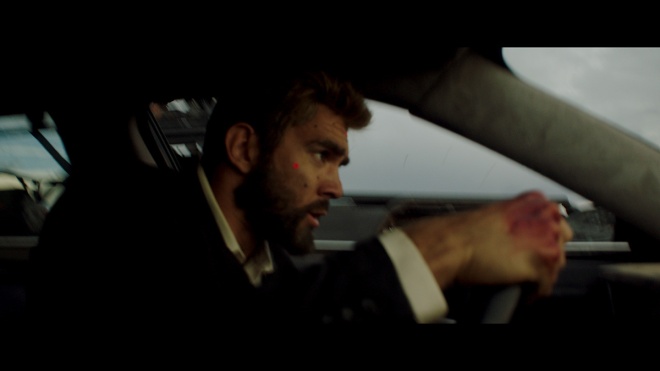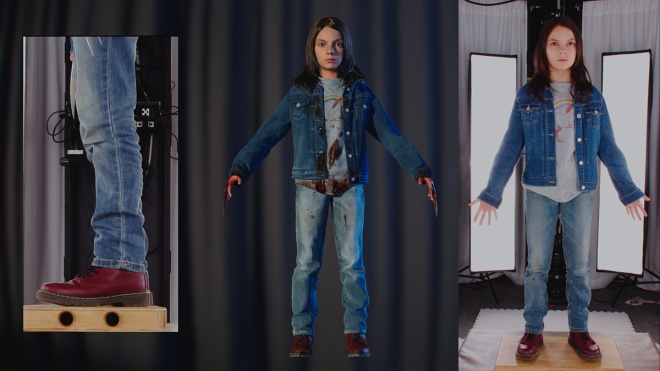
Between the 23rd and 27th of October, the city of Turin in Italy will be host to the VIEW Conference. Now in its 18th year, VIEW offers an intimate setting with a wide-ranging set of speakers from the visual effects, animation, games and interactive media industries.
One of those speakers is Image Engine visual effects supervisor Martyn Culpitt, who worked on director James Mangold’s Logan, one of the biggest films of the year. It’s also a film that surprised many with a seamless use of digital doubles for Hugh Jackman’s Wolverine and X-24 characters, and the digital double for the character of Lara, played by Dafne Keen.
At VIEW, Culpitt will be exploring Image Engine’s CG digi-doubles work and other visual effects in Logan, in detail. I caught up with the visual effects supervisor for a preview of his VIEW talk and a discussion about his thoughts on the state of digital human performances.
vfxblog: A lot of people did not realize there had been any digital double work in Logan at all. Why do you think it was so successful in staying invisible?
Martyn Culpitt: I think really it comes down to the fact that we’d spend a lot of time on the integration, and basically making it seamless, so that you weren’t taken out of the movie at any time.
Also, because it’s a superhero movie, everyone perhaps thought that there were going to be a lot of over the top visual effects to help push it along, but I think Logan was an amazing story about the two characters and their near connection. If we had gone any further into that realm of just an effects movie, then that takes you out of that story, too.
Another thing that made it work was, in the film, you cut from a digital shot that we created, to a shot where Hugh Jackman picks up from that. The same thing happened with Dafne, and so it helps just with that suspension of disbelief where, ‘Oh, they’ve also done that other kind of effect or kind of stunt work, as well.’


vfxblog: As you say, one thing that can work well in visual effects is having multiple methods to get the shot. Sometimes, when it’s one CG character on screen for a while, the audience is often given time to absorb that and decide whether they think it’s real or not. Did that factor in to the believability, do you think?
Martyn Culpitt: Yes, I think that’s absolutely true. In that case, you’re seeing a visual effect pretty much every single shot, and you’re going to start to pick up on it. For instance, there’s the sequence where Logan and X-24 were walking on the stairs, and no one had any idea that X-24 was a digital head, because you then cut as he’s walking down the stairs to Hugh looking at us as X-24. You fully buy it.
vfxblog: When you were tasked with these shots, what kind of research did you do into previous work that had been done with digital human characters? What other films did you look to?
Martyn Culpitt: Doing research before you step into any project is vital. Especially for this, with CG humans, because we all know what a human looks like. The eyes, especially, are one of the biggest things, there was a lot of time spent trying to get the eyes to feel like they have a soul. If they don’t, it just feels like a reflective piece of glass. And so we really studied Hugh and Dafne’s eyes, as well as all the other details on their face, to make sure that we had the elements so that it would refract and bend the light, really, mimicking the way Hugh and Dafne’s eyes worked.
There were three main movies that we looked at where we thought it had really worked. The Curious Case of Benjamin Button was the first, just because of the complexity of what they did with Brad Pitt. Then Tron: Legacy, because they were starting to look at a whole different way of kind of the capture. And then Fast and Furious 7, which was really my go-to film.
It’s interesting, right from the beginning, Chas Jarrett, the overall visual effects supervisor, had said to me that he doesn’t believe in the Uncanny Valley. He believes that either it looks like the actor or it doesn’t, and I kind of agree with that too.
vfxblog: You had the actors scanned in USC ICT’s Light Stage – what do those scans give you that you don’t necessarily get anywhere else?
Martyn Culpitt: You’re basically taking the reflectance off the skin and then separating that and giving you the surface texture as well. To be honest, we could, given time, with our amazing crew, we could actually create that here, but it’s very hard to know how the skin’s going to react to light. And also scanning the face let’s you zoom right into the pore details, and you’re getting all the blemishes.
We also captured our own FACS shapes, 64 face shapes, with one of our animators here. She’s got an amazing way of creating the face shape, the exact face shapes that we needed. For that we used a local Vancouver company called Pixel Light Effects. It enabled us, right at the start, to be able to get the shapes and then create our system based on those. And then, once we got the ICT scans for Hugh and Dafne, we then switched out to those FACS shapes. Then we were able to blend these, because the more shapes you have, the more you can make a robust facial rig to be able to do what you want.

vfxblog: What would you say was one of the major challenges, amongst many, in making the digital doubles for Logan?
Martyn Culpitt: It’s obviously really hard to get enough time with the actors, especially Hugh. For an example, with ICT, Hugh came to the session and he literally had only six hours and then had to go. So we really had to plan exactly what we needed him to do within those six hours.
It’s funny, he came into ICT and we had a conversation about what we needed from him and he went off to the greenroom and shaved. He came in looking like Logan, you know, with his big lamb chops and muscle chops and beard. But we got him to shave because we needed the skin and shape of his face. He was singing in the greenroom, talking about ‘it’ going away, because he basically had a beard nearly a year from shooting. And he was singing, ‘Goodbye, lamb chops!’.
Image Engine’s Martyn Culpitt is a speaker at this year’s VIEW Conference. For more information on his talk and other speakers, go to http://www.viewconference.it/.

Post a Comment